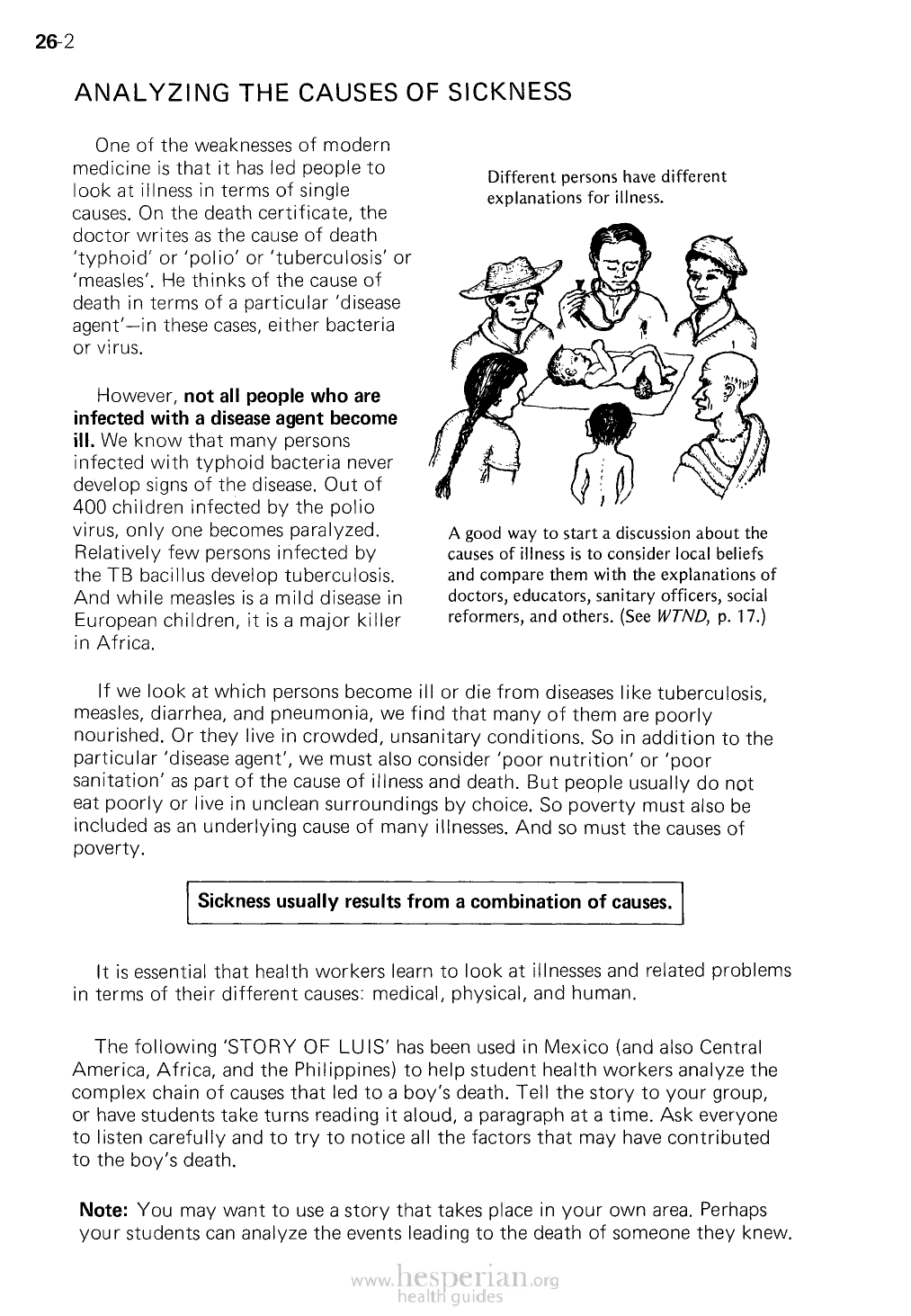
26-2
ANALYZING THE CAUSES OF SICKNESS
One of the weaknesses of modern
medicine is that it has led people
to look at illness in terms of single
causes. On the death certificate, the
doctor writes as the cause of death
‘typhoid’ or ‘polio’ or ‘tuberculosis’ or
‘measles’. He thinks of the cause of
death in terms of a particular ‘disease
agent’—in these cases, either bacteria
or virus.
Different persons have different
explanations for illness.
However, not all people who
are infected with a disease agent
become ill. We know that many
persons infected with typhoid bacteria
never develop signs of the disease. Out
of 400 children infected by the polio
virus, only one becomes paralyzed.
Relatively few persons infected by
the TB bacillus develop tuberculosis.
And while measles is a mild disease in
European children, it is a major killer in
Africa.
A good way to start a discussion about the
causes of illness is to consider local beliefs
and compare them with the explanations of
doctors, educators, sanitary officers, social
reformers, and others. (See WTND, p. 17.)
If we look at which persons become ill or die from diseases like tuberculosis,
measles, diarrhea, and pneumonia, we find that many of them are poorly
nourished. Or they live in crowded, unsanitary conditions. So in addition to
the particular ‘disease agent’, we must also consider ‘poor nutrition’ or ‘poor
sanitation’ as part of the cause of illness and death. But people usually do not
eat poorly or live in unclean surroundings by choice. So poverty must also be
included as an underlying cause of many illnesses. And so must the causes of
poverty.
Sickness usually results from a combination of causes.
It is essential that health workers learn to look at illnesses and related problems in
terms of their different causes: medical, physical, and human.
The following ‘STORY OF LUIS’ has been used in Mexico (and also Central
America, Africa, and the Philippines) to help student health workers analyze the
complex chain of causes that led to a boy’s death. Tell the story to your group, or
have students take turns reading it aloud, a paragraph at a time. Ask everyone to
listen carefully and to try to notice all the factors that may have contributed to the
boy’s death.
Note: You may want to use a story that takes place in your own area. Perhaps
your students can analyze the events leading to the death of someone they knew.